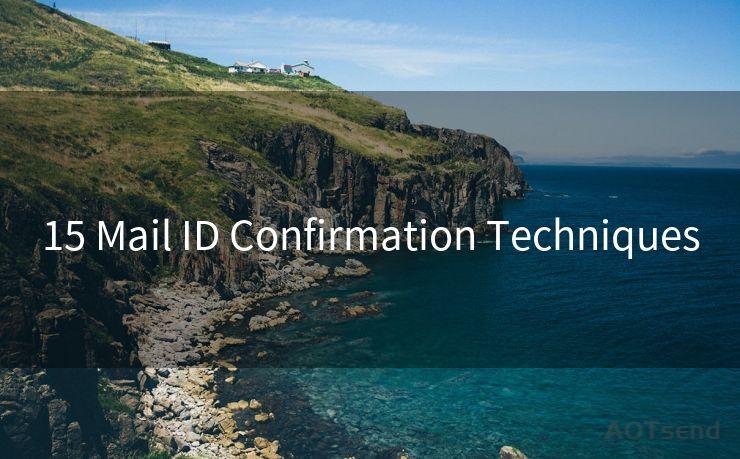15 Mail ID Confirmation Techniques




In the digital age, email has become an indispensable tool for communication. However, with the rise of cybercrime, it's crucial to ensure that your emails are reaching the intended recipient securely. Here, we explore 15 techniques to confirm mail IDs for secure communication.
1. Double Opt-In Confirmation
A common practice to verify email addresses is through double opt-in confirmation. When a user signs up, they receive a confirmation email with a link. Clicking the link verifies the address and activates the account.
2. Typo Check
A simple yet effective technique is to manually check for typos or formatting errors in the email address. This can prevent emails from being sent to the wrong address due to minor typos.
3. DNS Validation
Validating the Domain Name System (DNS) records of an email domain can confirm its authenticity. This involves checking the MX (Mail Exchanger) records to ensure emails are routed correctly.
4. Regular Expressions
Using regular expressions (regex) to validate email formats can help filter out invalid or malformed addresses before sending.
5. Sender Policy Framework (SPF)
SPF is an email validation system that helps prevent email spoofing. It allows domain owners to specify which mail servers are authorized to send emails from their domain.
6. DKIM Signing
DomainKeys Identified Mail (DKIM) signing adds a digital signature to outgoing emails, verifying their authenticity and integrity. This helps recipients confirm that the email hasn't been tampered with during transit.
7. DMARC Policy
DMARC (Domain-based Message Authentication, Reporting, and Conformance) is a technical specification that helps reduce email spoofing. It builds upon SPF and DKIM to provide a framework for email validation and reporting.
8. Reverse DNS Lookup
Performing a reverse DNS lookup on the sending server's IP address can help verify its legitimacy and reduce the chances of spam or phishing emails.
9. Greylisting
Greylisting is a method of defending against spam. When a server receives an email from an unknown sender, it temporarily rejects the message and requests that it be resent later. Legitimate mail servers will typically retry, while spam servers often won't.

10. Bayesian Filtering
Bayesian filtering is a statistical technique used to identify spam. By analyzing large samples of spam and non-spam emails, the filter learns to distinguish between them, helping to block unwanted messages.
11. Content Filtering
Filtering emails based on their content, such as specific words or phrases, can help identify and block potential spam or phishing attempts.
12. Blacklists and Whitelists
Maintaining blacklists of known spam sources and whitelists of trusted senders can further enhance email security.
13. Multi-Factor Authentication
Implementing multi-factor authentication for email access adds another layer of security, ensuring that only authorized users can access their accounts.
14. Encrypted Communication
Using encryption protocols like SSL/TLS for email communication ensures that emails are transmitted securely, protecting sensitive information from being intercepted.
15. Employee Training
Finally, regular employee training on email security best practices is crucial. Teaching employees how to identify and avoid phishing emails, as well as how to properly handle sensitive information, can significantly reduce the risk of email-based attacks.
In conclusion, these 15 mail ID confirmation techniques are essential for secure communication in today's digital landscape. Implementing these strategies can help protect your organization from email-based threats and ensure that your messages reach their intended recipients safely.
🔔🔔🔔
【AOTsend Email API】:AOTsend is a Managed Email Service for sending transactional emails. Support Email Types: reminders, authentication, confirmations, notifications, verification codes, invoices, password resets, account activations, billing statements, two-factor authentication (2FA), and one-time passwords (OTP) emails, etc. $0.28 per 1000 Emails. 99% Delivery, 98% Inbox Rate.
You might be interested in:
Why did we start the AOTsend project, Brand Story?
What is a Managed Email API, How it Works?
Best 25+ Email Marketing Platforms (Authority,Keywords&Traffic Comparison)
Best 24+ Email Marketing Service (Price, Pros&Cons Comparison)
Email APIs vs SMTP: How they Works, Any Difference?




Scan the QR code to access on your mobile device.
Copyright notice: This article is published by AotSend. Reproduction requires attribution.
Article Link:https://www.mailwot.com/p2807.html



